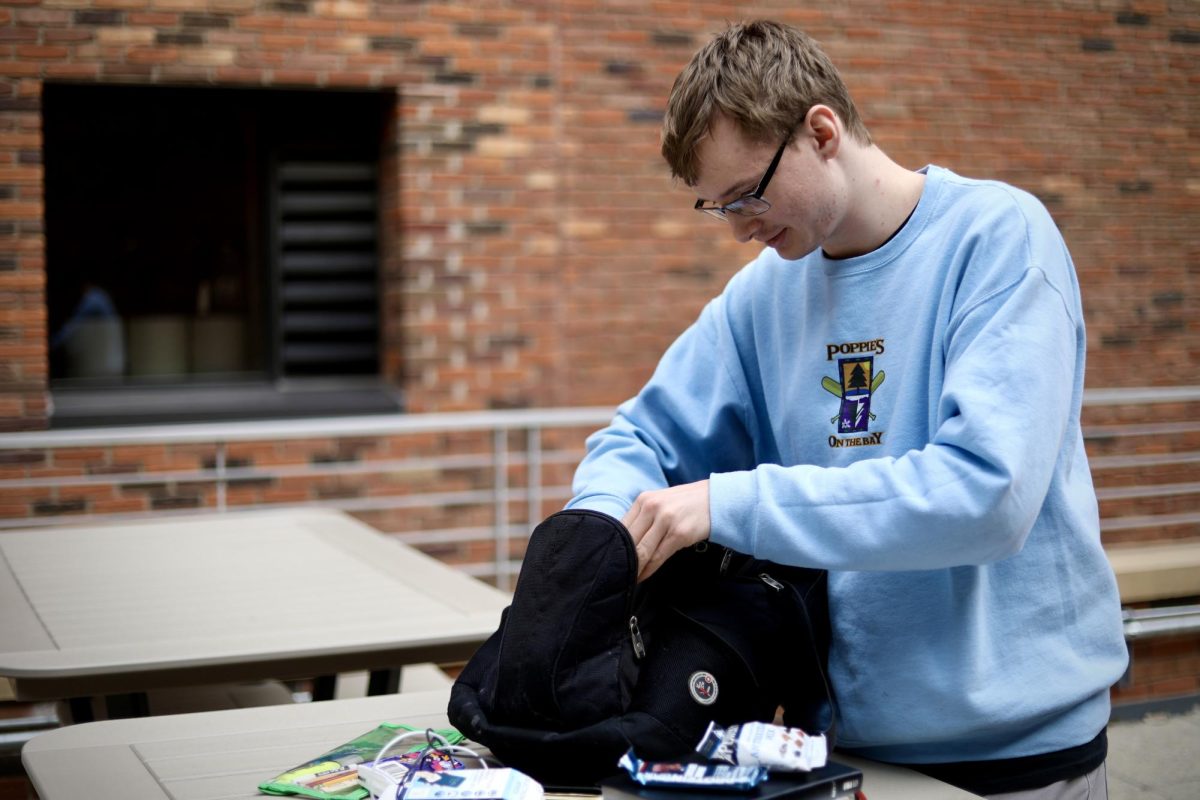New space in Clausen Center aims to promote understanding, friendship and shalom.
Jenny Hudalla | Editor-in-Chief
Cherie Suonvieri | Managing Editor
Published April 16, 2015 in The Clarion.
When Hmong-American student Johnny Yang arrived on Bethel’s campus, it didn’t take long for him to realize something was missing: a safe place for him to process his identity as a student of color. Four years and many petitions later, Yang finally gets to see that dream become a reality.
On March 30, Bethel announced that a long-awaited Cultural Connections Center would open next fall. According to Leah Fulton, associate dean of intercultural student programs and services, the CCC is a Christ- centered community space created to promote understanding, friendship and shalom.
“It feels great to finally see this happen,” said Yang, who still carries memories of uneasiness and trauma during his time at Bethel. The community fostered by the CCC, he said, could facilitate the vulnerability and accountability that precedes the process of reconciliation.
While the CCC will serve as a gathering place for students of color as well as the “programming arm” of the Office of Intercultural Programs and Services, it is not, as CAS vice president and dean Deb Sullivan-Trainor said, a “student-of-color lounge.”
“We will not have succeeded if we get to the end of next year without having lots of different students from lots of different backgrounds in the CCC,” Sullivan-Trainor said. Located on the third floor of the Clausen Center, the CCC will be furnished and ready for use next fall.
Until then, a question box will be mounted on the wall outside of the hallway that houses the anthropology, sociology and reconciliation studies department for students to inquire about the space.
Funded by the Office of International Programs and Services and its partners, the CCC cost $12,000 to construct and will operate with a $20,000 yearly budget. It takes the place of the recently relocated Alumni and Parent Relations — a vacancy Sullivan-Trainor jumped on last spring.
“I went to the Retention of Students of Color Committee and said, ‘We have a chance,’” Sullivan-Trainor said. “I know the desire to have this space had been there for a long me.”
Indeed, the idea’s inception dates back to 2007, when Cecilia Williams, Fulton’s predecessor, proposed the creation of a safe space for students of color to a student retention task force convened by former faculty member Curtiss DeYoung. Now, eight years later, proponents of the room have gathered the support and resources necessary to make it happen.
While Fulton knows some are concerned about the room’s potential to create division, she said it will only highlight the barriers that already exist.
“For those who feel adamantly about the lack of need [for this room], do you really want to understand why students need it?” Fulton asked. “If there’s a genuine desire to understand, I would encourage [students] to talk with and learn from people who do see the need for the space.”
Nathan Day, a biracial Hispanic-American student, said the creation of the CCC affirms his value as a person of color on campus.
“It shows me that Bethel is striving to become a unified community where all cultures, races and ethnicities are celebrated and supported,” Day said.
Though Chief Diversity Officer Ruben Rivera said Bethel has always appreciated diversity from a faith perspective, it has only just begun to put collective muscle behind the push for con- crete programs and services for minority students.
Up to 80 percent of entering freshmen come from what Rivera called “local Minnesota communities.” The seven-county metro area is now 30 percent people of color, but Bethel is still a predominantly white institution, with less than 10 percent students of color. Additions like the CCC, Rivera said, are part of the university’s marketing and retention strategies.
Fulton added that diversity is more than race and color. She hopes the room will engage the gender studies program, the social work club, Disability Awareness Group and Bethel’s chapter of IJM, to name a few.
“This isn’t just for the 9-10 percent who are students of color,” Fulton said. “This has to do with people’s employability beyond college. Alumni surveys [and qualitative data] suggest Bethel graduates aren’t well-equipped to deal with diversity, and that’s not something people are going to be able to avoid when they leave here.”
But diversity at face value, according to Rivera, solves nothing. Students, faculty and staff must still learn to do the work of reconciliation.
“I know things like this can make people nervous,” Rivera said. “But that doesn’t mean we can’t treat each other like humans. Our faith should be able to help us live together and create understanding and compassion despite disagreements. If it can’t, I don’t know what we’re doing.”








![Senior Bethel receiver Micah Niewald sheds a would-be tackler on his way to a touchdown in the Royals’ 73-8 win over Augsburg Saturday. Niewald sped his way to two touchdowns in the win, tallying 62 yards after the catch between the two scores. “Knowing I can outrun the guy that’s chasing me is a big thing,” Niewald said. “That’s going back to [strength and conditioning] Coach Meyer and everything we do in the summer and off-season.” | Photo by Carl Schumland, Bethel Athletics](https://thebuclarion.com/wp-content/uploads/2024/10/3J9A1632-1200x800.jpg)







